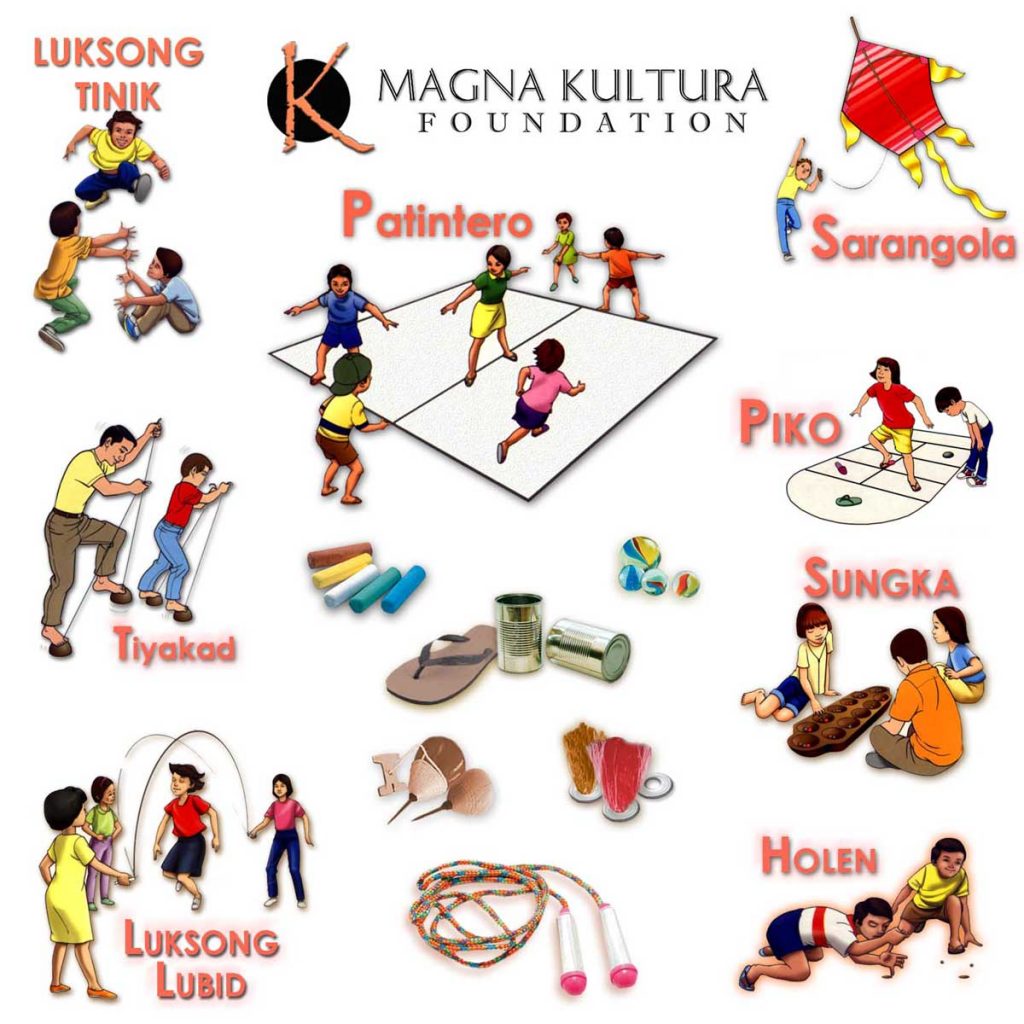
The news has bombarded on our newsfeed – there are over 42,000 frustrated Ilonggo readers from kindergarten to high school. And not to toot our own horn, but local advocacy group, Bata Ako Ph, shared their own woes on why this is the case.
Bata Ako Ph had small closed-door sessions with school teachers (from Jaro to Villa) where reading and comprehension is a major problem of Grade Schoolers, and yes, High Schoolers as well.
According to reports, “Frustration level” readers can recognize some words but they lack comprehension, according to Dr. Roel Bermejo, superintendent of the Iloilo Schools Division (reported by Panay News here). Now, the goal of the Schools Division is to develop them into “independent level” readers.
There are various factors that have led to this case. According to DepEd, children with special needs are enrolled in regular classes and have a hard time catching up with the lessons intended for a regular class. Fact check: true for Bata Ako Ph. We’ve done reading and storytelling sessions with two (2) schools, eight (8) sections having these problems.
Another is the family’s socioeconomic status. “Learners from poor families were likely to miss classes more often to help their parents make a living,” Bermejo said. “Another factor could be the parents’ lack of interest in how their children were faring in school,” he added.
Factors affecting our Ilonggo readers
What we’ve found are various factors contributing to this issue – mostly arising from 12 years of book readings and 5 years as Bata Ako Ph. From schools to daycare centers, and communities, here’s what we can cover for now.
POVERTY
Young Ilonggo readers or students dropped out of classes because the parents can’t afford to pay tuition and school fees. Dr. Bermejo mentioned that socioeconomic status affected a child’s learning and comprehension ability. This, or the fact that parents send kids to work with them because they believe they can earn more when children go about the city and sell various goods and wares.
We’ve pointed out two schools as we’ve interviewed some teachers and personnel there. According to a certain *Ms. Nelia from Calumpang, Molo, there are students who will just drop classes for one month and look for work. Take note, they’re just third graders.
“Kalabanan sa ila late mag enroll kay ga pangita pa kwarta pang tuition. Damo na na-miss nila nga subjects. Kung kis-a ga guwa sila mga is aka semana asta isa ka bulan para maka ubra upod sa ginikanan nila.”
“Most of them would enroll late because they’re looking for money to pay for their tuition. They missed a lot of subjects. Sometimes, they cut classes from one week to one month so they can work with their parents,” she said.
The question – why does the school still accept poor learners in class and be placed among regular attendees? Surely, they’ll miss a lot of subjects at school. The answer? Most of them feel sorry for these children and see the need for kids to finish school.
What Bata Ako Ph is concerned about is not the finishing of their education, but rather, how much they’ve learned. Simply finishing their education does not guarantee skilled Ilonggo readers.
Other cases from Jaro and Villa echoed the same sentiments.
NO HEAD FAMILY FIGURES
The presence of an adult teaching them to read or instill the idea of reading is truncated. The parents or grandparents themselves can’t read or have no time to teach our young Ilonggo readers. It’s given in Iloilo that most grandparents are the ones looking after the children because the parents are often away or are no longer interested in raising the child.
For instance, *Nang Tata, a 67-year-old fish vendor in City Proper, takes on multiple jobs just to support her three grandchildren – a four-year-old girl, an eight-year-old boy, and another 10-year-old boy. The parents? Her daughter ran away with another married man in Tacloban.
When Nang Tata needs help selling in the market, she’ll ask her grandchildren to help her. Even if it means costing an absent from their school.
Likewise, laundry washer *Nang Julia, 60 years old, also experienced the same thing. She’s taking care of her two grandchildren after both parents separated and married again to new partners.
She would take *Star and *Pao-Pao with her and teach them to do laundry instead. Nang Julia’s grandchildren only finished grade school and soon fended themselves on their own looking for families to hire them.
NO ACCESS to BOOKS
For our Ilonggo readers, this is the number one concern of Bata Ako Ph and it’s why we started, right? Due to the lack of resources, we can’t even move freely and donate books all the time.
Lately, storytelling is beginning to lose its magic as many parents or guardians find little time to spend with children as the hustle and bustle of life requests them to answer the needs of living.
This is an unfortunate fact we have to face today: many think books, like cars, are luxuries. However, we believe books should be treated as though they are necessities. Through storytelling, books can produce improvements in our Ilonggo readers’ behavior and skills.
Would easier access to books play an important role in motivating kids to read books?
We don’t know the exact answer to this question, but we believe providing access is an important step to encouraging literacy. It is thought that families without books lack interest in reading. But that’s not entirely true; with the number of families living in poverty on the rise, any meager income they can earn for the day can’t certainly be spent on books.
This is what compelled us—a small group of people who grew up with the “traditional” style of storytelling—to go out and inculcate the power of this wonderful medium to today’s kids. A single day with the children is all we need to let everyone see the various ways in which storytelling can help children grow.
The group promotes storytelling in all its forms by hosting activities that encourage children to participate and let them develop awareness for literature.
FAMILY ABUSE
Young girls and boys have been physically or lewdly abused by their parents. It’s one major problem in some of Bata Ako Ph activities. Take, for instance, a four-year-old girl in Passi (yes, you read that right) was used by her father, uncle, and brother at the same time. Instead of growing and developing new skills, her learning and communication abilities retracted.
Likewise in a *certain barangay in Jaro, *Toto, a two-year-old boy, was physically abused by his mother – the latter was suffering from postpartum depression. He can barely talk, read, or understand a word or two for his age. He was taken to the Department of Social Welfare and Development, but the father, a trisikad driver, got him back and sought help from their barangay’s daycare center.
Family abuse is more common and one silent factor why many children dropped out of school or ended up as what many people say, ‘frustrated Ilonggo readers.’
MEDIA and TECHNOLOGY
Sangguniang Panlalawigan member Jason Gonzales mentioned in a report that gadget use is one factor ruining the reading and comprehension skills of students. FACT CHECK: true. Here’s a study made by the National Council for Children’s Television, read it all here.
One of the main variables of the study was Media Consumption for Grades 1 to 3 and 4 to 6 based on the experience and observance of both parents and children. Media consumption includes television-viewing, video-gaming, and social media usage.
The research showed impact and shock from constituents as to what these early learners have to watch on media. In our case, it’s our ‘frustrated’ Ilonggo readers.
For instance, ‘FPJ’s Ang Probinsyano’ ranked as the most viewed by children Grades 1 to 3, followed by ‘It’s Showtime’ and ‘Meteor Garden.’ According to the study, primary learners are also seen to watch television at 0.83 hours on weekdays and 1.89 on weekends.
TV viewing of children from Grades 4 to 6 didn’t seem to stray away from the early graders. Their top choice were ‘It’s Showtime,’ ‘FPJ’s Ang Probinsyano,’ and ‘Meteor Garden.’ These intermediate learners watch an average of 1.70 hours on weekdays and 3.70 hours on weekends.
Meanwhile, early graders’ video game preferences were also studied. Roblox came first, followed by Paw Patrol and Gatcha. Intermediate learners prefer Minecraft, Roblox, and Helix Jump.
Primary learners also like to watch Barbie, Frozen, and Minecraft on YouTube, while intermediate ones prefer 5-minute Crafts, DIY Crafts, and Minecraft.
On social media, 281 Grades 1 to 3 children already have their Facebook account, 41 have Twitter account, 72 have Instagram account, and 126 have Snapchat. About 450 grades 4 to 6 children have Facebook, 88 have Twitter, 452 have Instagram, and 153 have Snapchat.
MOTHER TONGUE LANGUAGE
Did you know that a lot of Ilonggo readers can’t get the language, Hiligaynon, well? Most children are satisfied learning and reading in English, but don’t want to study their own mother tongue. Here’s what we think of the issue.
There is an utmost importance of Mother Tongue in our education. Teachers using the English language have long been divided over how much of the student’s mother tongue (L1) should be used in the classroom.
Some argue that a student’s L1 is a hindrance, and teachers should avoid using it completely. Sometimes, in fact, this is necessary when the teacher does not speak the student’s L1. Though the monolingual method can work if implemented correctly, a judicious use of the student’s L1 at the beginner’s level has its own set of advantages that all teachers should understand before deciding which method to choose for their classrooms.
Here are four of the major advantages.
1. Allows the teacher to connect with students
When teaching absolute beginners in your native language, they obviously will not understand what you say at first. With an audio or visual approach, you can teach basic concepts, but if you are the type of person who likes to bond with your students, simply flashing pictures or pantomiming will not do the trick.
This is where occasional use of the L1 comes in handy. For instance, you might find a good time during a class to take a short break in which you would like to talk about an occasion or event they can relate to.
By doing so, your students begin to see you more as a peer and perhaps even get to know your human side rather than simply viewing you as a language acquisition tool. This creates a sense of comradeship, not only for your students but for you as well.
It relieves some of the dissonances between you and arguably creates a better learning environment. Best of all, it allows you to make jokes and ease some fears in students as well.
2. Teacher avoids losing beginner students’ attention
When first beginning to learn English, listening to full presentations in it can be mentally exhausting and overwhelming. Unless a student is highly committed to learning the language, you might encounter clear signs of boredom or, even worse, high dropout rates when using the monolingual method.
An occasional relapse into the student’s L1 can be refreshing at this phase of the acquisition process. The last thing you want as a teacher is to burn your students out to the point of giving up. What’s that word again? “Frustrated Ilonggo readers.”
3. Allows you to answer students’ questions
Many experts agree that there should be a much lower emphasis on grammar at the beginner’s level. There is plenty of empirical research to back this claim up, but keep in mind that your student is also your customer, and the customer is always right.
Even at the basic level, they will often make observations about the way something is said in the target language and ask the teacher why. Being able to give a brief explanation assures the student that you have the expertise they are looking for in a teacher.
At times, it might be necessary to explain that the concept is a little advanced and will be covered in a later lesson, but even this might require using the student’s L1 for a moment when working with beginners. You should not allow yourself to go off on a long digression from the class theme, but the student’s concern should also be acknowledged and addressed in some way. Using the student’s L1 allows you to make quick work out of this.
4. Improves students’ comprehension
Perhaps the oldest trick in the book is for a student to nod and act like he or she understands a concept. This is especially common in group classes where the student does not want to feel inferior. However, as a teacher, your job is to ensure that they really do understand. One way of doing so is to have the student translate what you just taught into his or her L1.
As a teacher, you might also find it occasionally useful to give your own translation in order to explain a concept. This might prove especially useful when teaching something that cannot quite be demonstrated by gestures or pictures, such as the meaning and use of basic modal verbs.
Though naysayers are correct in pointing out that overuse of a student’s L1 can hinder the learning process, it can also be a powerful tool when used in moderation. However, a few important points to remember are not to rely completely on it, not to allow yourself to go into long digressions in the student’s L1, and to gradually phase it out. By the time the student reaches the intermediate level, you should no longer need to use the L1 at all.
The student’s L1 should not be abused or overused, and if it looks like this is the direction your method is heading, cut back immediately. It is better not to use the student’s L1 at all than to overuse it.
Do we have classroom shortage?
This is one concern of the government. Yes, we have. And we also need teachers, supplementary materials, better pay, etc. Seems like help is underway for classroom shortage.
In a press release, the Department of Public Works and Highways (DPWH) is partnering with the Department of Education (DepEd) in the completion of building classrooms all around the country.
Citing the latest DPWH Bureau of Construction (BOC) Report for FY 2019 Basic Educational Facilities Fund (BEFF), DPWH Secretary Mark A. Villar said that more than 4,000 classroom projects are currently ongoing to address the country’s classroom shortage.
“DepEd allocated a total of P13.43 Billion in 2019 General Appropriations Act (GAA) for the construction of additional school building facilities with 4,810 classrooms. So far we have completed and turned over 368 classrooms,” said Secretary Villar.
“The DepEd school building projects are part of the DPWH Convergence Program with other national government agencies, added Secretary Villar.
“DPWH Regional and District Engineering Offices nationwide are also pushing to complete 4,414 classrooms that are now under civil works, and 28 more that will start construction soon. Hopefully, these will be turned over in time for the coming 2020-2021 school year,” Secretary Villar further stated.
There are 198 classrooms for Region 6 costing P478.62 Million that will be covered by 2019 BEFF.
Improving the skills of frustrated Ilonggo readers
Adding supplementary materials and piloting remedial classes in schools can curb frustrated Ilonggo readers. The system is helpful in pinpointing who among the children are failing at school so they can act on this initiative to remedy the situation.
While it’s not enough, it’s a good start. There are pros and cons to holding remedial classes. For the pros, first, it’s free. The student can come back to school and learn. However, some issues arising are:
- Will the child ever go back to his or her remedial classes? They can spend time looking for more money for their baon and daily family living. Parents are one driving force a school needs to talk to. They should be the first ones to motivate the kids to learn how to read and write. But if they’re the first ones to take the child out of school – that’s the problem.
- Have you ever thought about how the child will feel? If you ask children on a one-on-one basis, you’ll be surprised how many topics they can talk to you about! Ask the child how he or she feels about taking remedial classes or other school programs. Because, Bata Ako Ph did. And they mostly say they’re embarrassed that they’re lagging behind every other kid in school.
However, one can’t deny that remedial classes are needed to help improve the reading and comprehension skills of our young Ilonggo readers. Especially when the province is dealing with over 42,000 frustrated learners.










